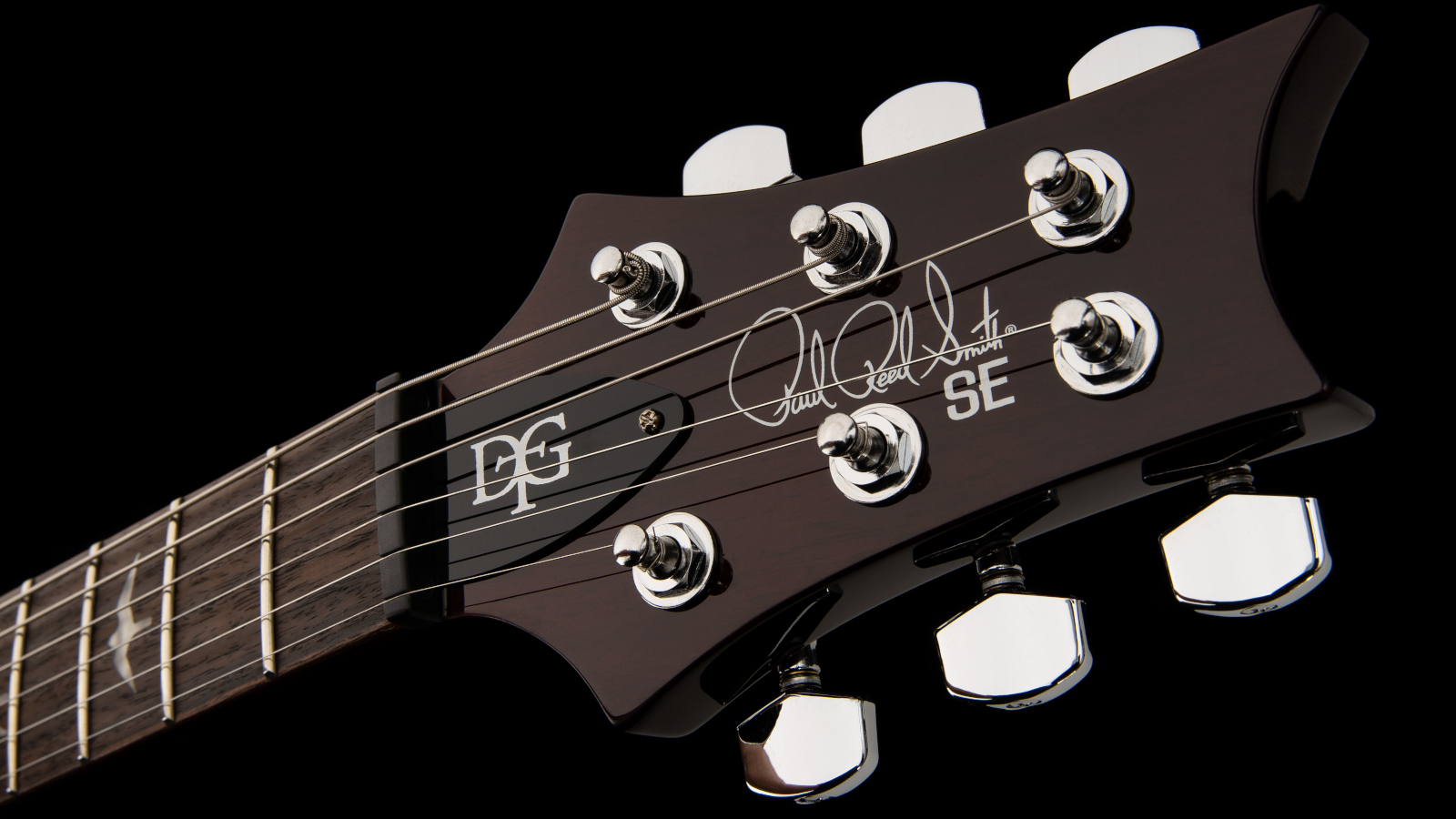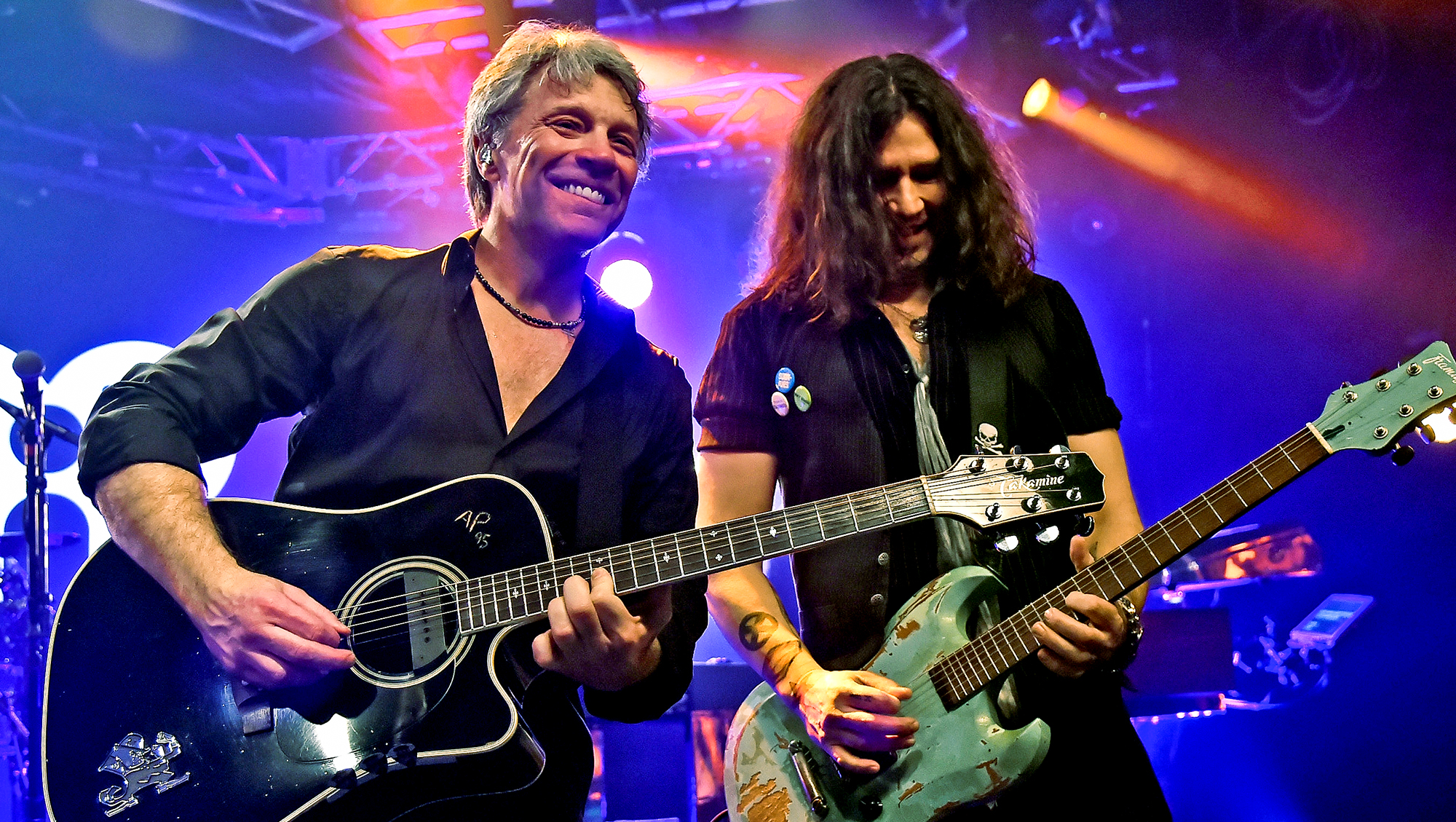GuitarPlayer Verdict
One of the best gig-ready jacks-of-all-trades you’re likely to find at this price
Pros
- +
An impressively cost-reduced version of the popular Core DGT, offering great playability and sonic versatility
Cons
- -
None
You can trust Guitar Player.
Since its introduction in 2007, the PRS DGT (for David Grissom Trem) has been one of the most successful, and most highly acclaimed, variations on the flagship PRS models and a firm favorite of numerous guitarists.
Created in close collaboration with the Texas guitar slinger, the DGT is often held up as the PRS to convert players who didn’t think they liked PRS, and as one of the most versatile electric guitar designs period from any major maker.
Given that history, the arrival of the more affordable PRS SE DGT is seen as a big deal in some circles – and should be a big deal for anyone seeking an extremely flexible, capable performer at a sub-$1k price point.

PRS’s SE range, manufactured at the Cor-Tek Musical Instrument Co. factory in Indonesia, has often been praised for delivering impressive quality at reasonable prices, and clearly both the design origination and QC oversight of the PRS USA headquarters in Stevensville, Maryland, has played a big part in that achievement.
Several subtle alterations in the recipe add up to quite a different playing feel and enhanced versatility for the DGT
If anything, I’ve experienced the SE range improving steadily over the years, and my initial impression upon sliding the SE DGT out of its gig bag is that this isn’t likely to change soon.
Outwardly, the DGT – both this SE and the Core original – might appear to follow the standard PRS formula, and indeed it does in many ways. The basics include a solid mahogany body and carved flame-maple top with natural maple-edge “binding,” glued-in mahogany neck with unbound rosewood fingerboard, 25-inch scale length and archetypal PRS vibrato bridge.
However, several subtle alterations in the recipe add up to quite a different playing feel and enhanced versatility for the DGT that has proven to really suit some players.
All the latest guitar news, interviews, lessons, reviews, deals and more, direct to your inbox!

The original DGT was based on a vibrato-equipped PRS McCarty model that Grissom was playing prior to its development, and to which he suggested a raft of modifications.
The original DGT was based on a vibrato-equipped PRS McCarty model that Grissom was playing
The McCarty body was already a tad thicker than that of the similar-looking PRS Custom, and the DGT retains that, along with the chunkier, more extended neck heel used to give the McCarty a more Les Paul-like sustain and resonance.
At the other end of the neck, the traditional 1 11/16 inches width at the nut was shaved down by 1/32 of an inch to a Gibson/Fender compromise, and the profile was carved to a rounded “C” with a medium depth of 27/32 of an inch (.843 inches) at the nut.
Rather than the volume, tone and five-way rotary selector that many foundational PRS guitars carried, or the alternative volume, tone, three-way toggle and push-pull, Grissom requested individual volume controls for each pickup so he could balance their signals in the in-between position, plus a three-way toggle selector and a master tone control with push-pull switch to split the coils on both pickups.
Finally, the pickups themselves played a big part in the DGT’s uptake, and the SE versions here contribute significantly to the SE DGT’s performance.
Savings come from the offshore manufacturing, for one, and the use of several cost-cutting measures
Created with both greater adherence to the original PAF humbucker design and the goal of realistic single-coil tones when split, they are lower output than many preceding PRS humbuckers (though by no means low-output in the broad sense).
Also, wiring them through the push-pull switch with an individual resistor lifting part of the tapped coil from ground keeps part of that coil in the signal at all times, resulting in a fatter and more authentic single-coil sound.
Savings come from the offshore manufacturing, for one, and the use of several cost-cutting measures. The top is less sumptuously carved, with less of an arch overall and less contouring around the upper horn, and the controls and switch are flush with the top rather than set into shallow recesses as on the Core DGT.
Rather than the nitrocellulose formulation that has been a big part of the USA DGT’s resume, the SE DGT is sprayed with polyurethane. It looks fabulous nonetheless, though it might feel less wood-adjacent in the hand as a result.
The guitar feels great in the hand and exhibits good craftsmanship from tip to tail
Tuners are more-traditional enclosed PRS units, rather than the Phase III Locking on upscale models.
The control and spring covers sit atop the back, rather than being recessed, and several other bits and pieces of hardware are SE-spec rather than USA/Core.
Regardless of all that, the guitar feels great in the hand and exhibits good craftsmanship from tip to tail. It rings like a bell when strummed unplugged and plays faultlessly up and down the neck, and it stays in tune remarkably well through heavy vibrato use.
One of two options initially available, this one also strikes a classic PRS chord in its McCarty Tobacco Sunburst finish with bird inlays, while the other offers the Goldtop with moon inlays that graced Grissom’s much-played original McCarty Trem.
In fact, having owned a couple of DGTs over the years, I’d say the SE makes an impressive first impression all around, and the alterations to the build and components quickly melted away once I started playing.
PRS has another winner with these pickup specs
Tested through a 1966 Fender Princeton combo and a 65amps London amp head and 2x12 cab, the SE DGT felt comfortably familiar, and superbly playable.
From a thick, Gibson-ish grind from power chords and singing, sustainful leads with the pickups in full-humbucking mode, to brighter, snappier, yet still gristly Fender-meets-P-90 tones with the pickups split, there are sounds here to attack just about any genre you’d need to tackle.
PRS has another winner with these pickup specs, and they manage to be both gutsy and dynamic at the same time, with good string articulation even amid the overdrive from pedals – a Wampler a Wampler Tumnus Deluxe and a feistier JHS Angry Charlie.

So many PRS guitars are already known for their chameleon-like capabilities, but I’d say the DGT platform adds further layers of versatility even to that, making this SE rendition one of the best gig-ready jacks-of-all-trades you’re likely to find at this price.
Sure, it’s missing certain elements of the overall build quality, feel and tone of the Core model – call it a notch or two down in elegance and opulence, if you like – but that’s a $4k-plus guitar bought new today, so this shouldn’t come as a surprise.
Given that, the SE DGT appears to perform even higher above its pay grade, and makes a worthy Editors’ Pick Award winner.
Specifications
- NUT: Bone, 1 21/32” wide
- NECK: Mahogany, PRS DGT rounded “C” profile
- FRETBOARD: Rosewood, 25” scale, 10” radius
- FRETS: 22 medium-jumbo
- TUNERS: PRS enclosed
- BODY: Solid mahogany with flamed maple top
- BRIDGE: PRS patented vibrato
- PICKUPS: Two PRS DGT “S” humbuckers
- CONTROLS: Two volume, shared tone with push-pull switch for coil splitting, three-way selector switch
- FACTORY STRINGS: PRS Classic .010–.046
- WEIGHT: 7.45 lbs
- BUILT: Indonesia
Visit PRS Guitars for more information.
Dave Hunter is a writer and consulting editor for Guitar Player magazine. His prolific output as author includes Fender 75 Years, The Guitar Amp Handbook, The British Amp Invasion, Ultimate Star Guitars, Guitar Effects Pedals, The Guitar Pickup Handbook, The Fender Telecaster and several other titles. Hunter is a former editor of The Guitar Magazine (UK), and a contributor to Vintage Guitar, Premier Guitar, The Connoisseur and other publications. A contributing essayist to the United States Library of Congress National Recording Preservation Board’s Permanent Archive, he lives in Kittery, ME, with his wife and their two children and fronts the bands A Different Engine and The Stereo Field.


